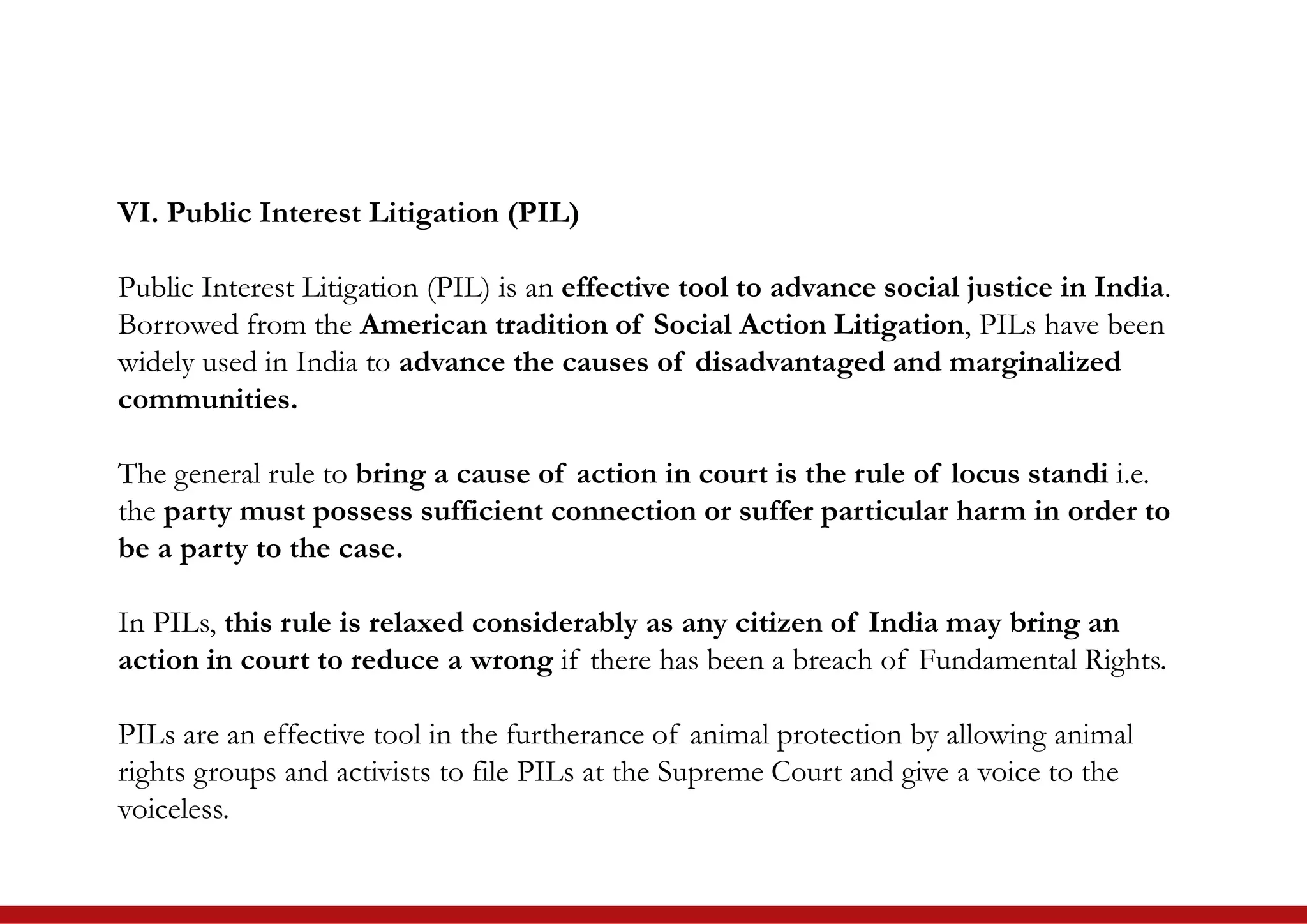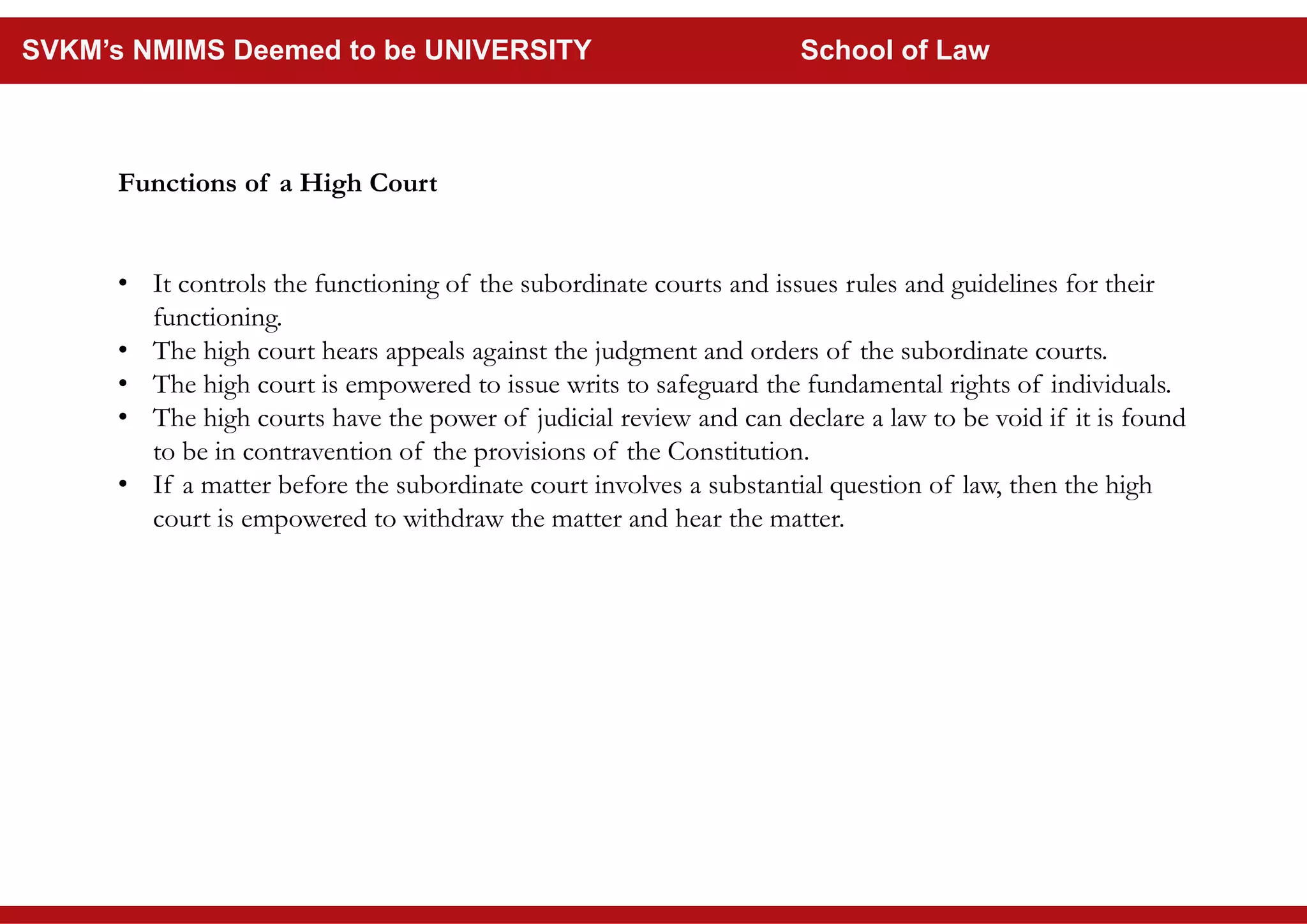The judiciary in India has a hierarchical structure of courts with the Supreme Court at the top, followed by High Courts in each state and union territory. Below the High Courts are district courts and subordinate courts that handle civil and criminal cases. The Supreme Court has original and appellate jurisdiction and ensures the independence of the judiciary from the legislature and executive. Key functions of the Indian judiciary include upholding the constitution, resolving disputes, protecting fundamental rights, assisting in lawmaking, and interpreting laws.

























![Article 132(1) empowers the Supreme Court to allow appeals against any judgment, order or
decree from the high court if the matter is certified to involve a substantial question of law by the
high court under Article 134A.
In civil cases, appeals can be made before the Apex Court under Article 133(1) subsequent to the
high court’s sanction.
Similarly, in criminal cases Art 134, an appeal can be made before the Apex Court with
the prior certification of the high court or
where the accused is sentenced to death by the high court in the reversal of his acquittal
or
where the high court sentences a person to death after withdrawing the case from a
subordinate court.
Special Leave Petition [Article 136(1)].](https://image.slidesharecdn.com/hierarchyofcourts-221213223642-0ada739d/75/Hierarchy-of-Courts-pptx-26-2048.jpg)














